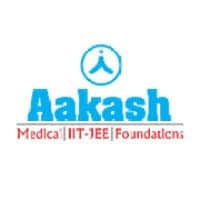Aakash Repeater Courses
ApplyTake Aakash iACST and get instant scholarship on coaching programs.
Do you know how atoms bind, why some reactions release heat while others absorb heat, what makes organic compounds react easily, and why ice floats over water? The answers to all these questions lie in the topics covered in NCERT Class 11 Chemistry. This textbook is not just for formulas and concepts in fact it helps you to find the reasons behind everyday phenomena we observe. Chemistry contributes to approximately 70% of innovations in healthcare, energy, and material sciences.
Whether struggling with balancing equations or understanding Molecular orbital theory, these Solutions are designed to make learning easy and systematic. Our subject experts design NCERT solutions to help students understand the concepts of Class 11 Chemistry through a series of solved examples. NCERT Solutions for Class 11 help students to build confidence and prepare effectively for boards and competitive exams.
Students can download the NCERT Solutions for Class 11 Chemistry pdf in easy-to-download format.These solutions are designed by subject experts and follows latest CBSE guidelines.
|
Chapter Name | PDF Link |
|
Chapter 1: Some Basic Concepts of chemistry | Download PDF |
|
Chapter 2: Structure of Atom | Download PDF |
|
Chapter 3: Classification of Elements and Periodicity in Properties | Download PDF |
|
Chapter 4: Chemical Bonding and Molecular Structure | Download PDF |
|
Chapter 5: Thermodynamics | Download PDF |
|
Chapter 6: Equilibrium | Download PDF |
|
Chapter 7: Redox Reactions | Download PDF |
|
Chapter 8: Organic chemistry- some basic principles and techniques | Download PDF |
|
Chapter 9: Hydrocarbons | Download PDF |
NCERT textbook is divided into two parts with a total of 9 chapters; Part 1 contains 6 chapters and Part 2 contains 3 chapters. These Class 11 Chemistry NCERT Solutions offer a clear and structured explanation of all chapters, helping students build strong foundational concepts. Thus, it becomes mandatory for Class 11 students to read and understand each of the topics in the easiest and most effective way. These solutions cover all the chapters of physical, inorganic, and organic chemistry included in NCERT Class 11 Chemistry Book.
Below is the list of chapters covered in Part 1 of the NCERT Class 11 Chemistry book. Each chapter provides a strong foundation of key concepts along with practical applications. Students must understand each topic thoroughly to build a strong understanding of each concept.
Class 11 Chemistry Part 2 covers more advanced topics to enhance understanding of the subject. These chapters help students to prepare for higher-level concepts.
Given below the five chapters that have been removed from the revised NCERT Class 11 Chemistry syllabus.
Topics covered in every chapter of NCERT Class 11 Chemistry textbook are given below in table format:
NCERT solutions for class 11 chemistry chapter 1 will help you learn the properties of matter and the principles and laws related to it. These solutions provide accurate answers and detailed explanations of questions asked in NCERT textbook. This unit explains the importance of chemistry in our daily life. The important topics covered are,
| 1.1 Importance of Chemistry |
| 1.2 Nature of matter |
| 1.3 Properties of matter and their measurement |
| 1.4 Uncertainty in measurement |
| 1.5 Laws of Chemical Combinations |
| 1.6 Dalton Atomic Theory |
| 1.7 Atomic and Molecular masses |
| 1.8 Mole Concept and Molar Mass |
| 1.9 Percentage composition |
| 1.10 Stoichiometry and stoichiometric calculation |
Structure of atoms deals with the fundamental particles of an atom, atomic models, and the concept of quantum numbers. The NCERT solutions for class 11 chemistry chapter 2 help you understand tricky topics like Bohr’s model, de Broglie’s hypothesis, and electronic configuration with step-by-step explanations. The important topics covered in this chapter are-
| 2.1 Discovery of Subatomic Particles |
| 2.2 Atomic Models |
| 2.3 Developments leading to the bohr’s model of atom |
| 2.4 Bohr’s Model for the Hydrogen Atom |
| 2.5 Towards a Quantum Mechanical Model of an Atom |
| 2.6 Quantum Mechanical Model of an Atom |
Classification of elements and periodicity in properties is very important for Class 11 since it explains basics like chemical bonding and periodicity. The NCERT Solutions of Class 11 Chemistry chapter 3 focuses on representing the concepts in the easiest way possible. The important topics covered in this chapter are:
| 3.1 Why Do We Need to Classify Elements? |
| 3.2 Genesis of Periodic Classification |
| 3.3 Modern Periodic Law and The Present Form of The Periodic Table |
| 3.4 Nomenclature of Elements with Atomic Numbers > 100 |
| 3.5 Electronic Configurations of Elements and The Periodic Table |
| 3.6 Electronic Configurations and types of Elements: s-, p-, d-, f- Block |
| 3.7 Periodic Trends in Properties of Elements |
This chapter explains how atoms combine to form molecules through various types of bonds. The solutions simplify concepts like Lewis structures, VSEPR theory, hybridisation, and molecular orbital theory to help you solve problems easily. The important topics covered are-
| 4.1 Kossel-Lewis Approach to Chemical Bonding |
| 4.2 Ionic or electrovalent Bond |
| 4.3 Bond parameters |
| 4.4 VSEPR theory |
| 4.5 Valence bond theory |
| 4.6 Hybridisation |
| 4.7 Molecular orbital theory |
| 4.8 Bonding in Some Homonuclear Diatomic Molecules |
| 4.9 Hydrogen bonding |
NCERT solutions for class 11 chemistry chapter 5 Thermodynamics cover key concepts like energy changes, enthalpy, and entropy, helping you solve both theoretical and numerical problems with clarity and accuracy. The important topics covered are-
| 5.1 Thermodynamic terms |
| 5.2 Applications |
| 5.3 MeasuremenT of ∆U and ∆H: calorimetry |
| 5.4 Enthalpy change, ∆H of a reaction – Reaction enthalpy |
| 5.5 Enthalpies for different Types of reactions |
| 5.6 Spontaneity |
| 5.7 Gibbs energy change and equilibrium |
Equilibrium explains how chemical reactions reach a state of balance and how equilibrium constants are calculated. The solutions help you understand concepts like Le Chatelier’s Principle, ionic equilibrium, and pH calculations with step-by-step clarity. The important topics covered are-
| 6.1 Equilibrium in Physical Processes |
| 6.2 Equilibrium In Chemical Processes – Dynamic Equilibrium |
| 6.3 Law Of Chemical Equilibrium And Equilibrium Constant |
| 6.4 Homogeneous Equilibria |
| 6.5 Heterogeneous Equilibria |
| 6.6 Applications of Equilibrium Constants |
| 6.7 Relationship Between Equilibrium Constant K, Reaction Quotient Q And Gibbs Energy G |
| 6.8 Factors Affecting Equilibria |
| 6.9 Ionic Equilibrium In Solution |
| 6.10 Acids, Bases, And Salts |
| 6.11 Ionisation Of Acids And Bases |
| 6.12 Buffer Solutions |
| 6.13 Solubility Equilibria Of Sparingly Soluble Salts |
Redox reactions focus on oxidation and reduction processes, oxidation numbers, and balancing redox equations. The NCERT solutions for class 11 chemistry chapter 7 make these concepts easier to understand with detailed explanations and solved examples for practice.The important topics covered are-
| 7.1 Classifical idea of Redox reactions- Oxidation And Reduction Reactions |
| 7.2 Redox Reactions In Terms Of Electron Transfer Reactions |
| 7.3 Oxidation Number |
| 7.4 Redox Reactions and Electrode Processes |
Organic chemistry- some basic principles and techniques introduces the basics of organic chemistry, including nomenclature, classification, and reaction mechanisms. The solutions help simplify concepts like isomerism, inductive effects, and purification methods, making problem-solving more manageable. The important topics covered are-
| 8.1 General introduction |
| 8.2 Tetravalence Of Carbon: Shapes Of Organic Compounds |
| 8.3 Structural Representations Of Organic Compounds |
| 8.4 Classification Of Organic Compounds |
| 8.5 Nomenclature Of Organic Compounds |
| 8.6 Isomerism |
| 8.7 Fundamental Concepts In Organic Reaction Mechanism |
| 8.8 Methods Of Purification Of Organic Compounds |
| 8.9 Qualitative Analysis Of Organic Compounds |
| 8.10 Quantitative Analysis |
Hydrocarbons are building blocks of fuels, plastics, and many essential chemicals. The NCERT Solutions of Class 11 Chemistry chapter 9 has presented all the concepts in simple yet informative way. The compounds that are formed with the help of carbon and hydrogen are known as Hydrocarbons. The notes will help you distinguish a variety of hydrocarbons, e.g. saturated or unsaturated hydrocarbons, cyclic or acyclic, aromatic or non-aromatic etc.
| 9.1 Classification |
| 9.2 Alkanes |
| 9.3 Alkenes |
| 9.4 Alkynes |
| 9.5 Aromatic Hydrocarbon |
| 9.6 Carcinogenicity And Toxicity |
Class 11 is very important in the sense that it builds your basics, which will help you in class 12, so it is advised to not leave your doubts pending. Solve all the questions of the NCERT books, and if you are stuck somewhere, we will help you by providing free solutions to all the questions these solutions, which are prepared by subject experts. The aim of the NCERT solutions for class 11 chemistry is to develop a basic understanding of the concepts by the students.
Students can refer to the links given below for the NCERT exemplar subject-wise solutions.
The links provided in the table below will help give you the NCERT solutions for other subjects as well.
The links provided in the table below will help give you the NCERT notes for other subjects as well.
NCERT solutions are important for Class 11 Chemistry as they help students understand the fundamental concepts of the subject and provide a strong foundation for further studies. These solutions also serve as a valuable resource for preparing for competitive exams like JEE Main and NEET.
NCERT solutions are important for Chemistry because it will give you a clear understanding of the concept and help you to score high in your board exams. It will also help you to get a good score in competitive exam like JEE and NEET.
NCERT solutions for Class 11 Chemistry are available online on various educational websites and platforms. Students can also refer to the NCERT textbook for solutions to the exercise questions.
NCERT solutions for Class 11 Chemistry can help you in your studies by providing a clear and concise explanation of the concepts covered in the textbook. These solutions can also help you understand the problem-solving approach required for tackling different types of questions and improve your overall understanding of the subject.
No, NCERT solutions should not be used as a substitute for studying from the textbook. They are meant to complement your textbook studies and provide additional help in understanding the concepts and solving the exercises.
To effectively use NCERT solutions for Class 11 Chemistry in your studies, it is recommended to first attempt to solve the exercises on your own. Once you have attempted the questions, you can refer to the NCERT solutions to check your answers and understand the correct approach.
Application Date:24 July,2025 - 23 August,2025
Application Date:24 July,2025 - 23 August,2025

Take Aakash iACST and get instant scholarship on coaching programs.

This ebook serves as a valuable study guide for NEET 2025 exam.

This e-book offers NEET PYQ and serves as an indispensable NEET study material.

As per latest syllabus. Physics formulas, equations, & laws of class 11 & 12th chapters
As per latest syllabus. Chemistry formulas, equations, & laws of class 11 & 12th chapters
As per latest 2024 syllabus. Study 40% syllabus and score upto 100% marks in JEE